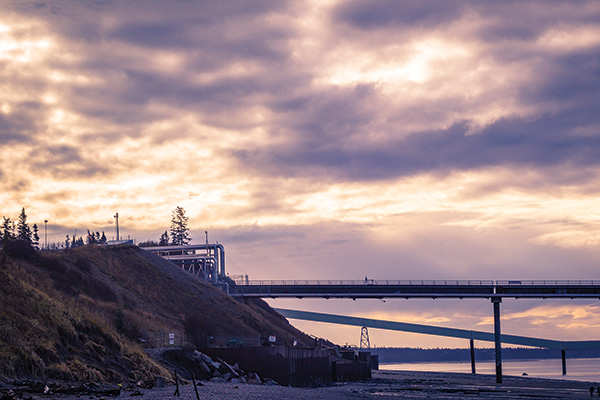May 2023, Vol. 250, No. 5
Government
Congress Gets Unusually Active on Pipeline Issues

By Stephen Barlas, Contributing Editor, Washington, D.C.
(P&GJ) — This could be one of the most significant congressional years for the pipeline industry in decades. Besides the start of work on the next pipeline safety bill, the House passed a big energy bill (H.R. 1) by a vote of 225-204 with four Democrats joining Republicans in the affirmative.
The bill as a whole probably won’t pass in the Senate. But the House bill, with numerous pipeline-friendly provisions, will serve as the basis for a more stripped-down Senate bill, which President Joe Biden might well support as his 2024 presidential campaign takes off, along with his need to seem less anti-fossil fuel than he has in the past.
H.R. 1 contains a number of natural gas provisions, some more impactful than others. These include the elimination of the soon-to-be required methane emission tax on interstate pipelines, which was included in the Inflation Adjustment Act and the elimination of one key state prerogative, which has been used to stop Federal Energy Regulatory Commission (FERC) approval of new pipelines.
Sen. Chuck Schumer (D-N.Y.), majority leader in the slightly Democratic-controlled Senate, called the legislation “partisan, dead-on-arrival and an unserious proposal for addressing America’s energy needs that they have laughingly labeled H.R. 1.”
He added, “It’s a non-starter in the Senate” and called the bill a “wish list for big oil.” Schumer did say, however, that he strongly supports ongoing bipartisan, bicameral talks on a potential permitting reform deal.
Schumer’s negative comments aside, aspects of The Lower Energy Costs Act (H.R. 1) are likely to attract considerable Democratic support in the Senate, not least because of the bill’s infrastructure permitting provisions that these days are not just, as in the past, seen as a giveaway to gas pipelines but instead as a major priority for wind and solar companies seeking to build facilities more quickly.
Jason Grumet, CEO of American Clean Power Association, came out strongly for provisions that establish “a predictable and timely federal permitting framework for projects.”
The pro-permitting provisions in H.R.1 appear in at least one instance to be stronger than those in Sen. Joe Manchin’s (D-W. Va.) permitting bill, which failed in 2022. The House bill says: “This section replaces the use of Clean Water Act (CWA) Section 401 for the purposes of interstate pipelines and LNG export facilities with ability for affected states to participate in the FERC-led NEPA process for an interstate natural gas pipeline or LNG project.”
Amy Andryszak, INGAA president & CEO, said, “INGAA’s primary goal is fixing the CWA 401 certification process to eliminate duplicative review, avoid inconsistent results across agencies and prevent the misuse of the CWA 401 process that has occurred in some states. We think Section 10008, which establishes a regulatory process for interstate natural gas pipelines that eliminates duplicative review while preserving protections for water quality, goes a long way in achieving that goal.”
Michael Pincus, a pipeline attorney who works at the law firm Van Ness Feldman, said, “For companies with projects in states that have denied water quality certification under Section 401, this provision would ensure that similar projects could not be vetoed by one state.”
While a number of Democrats in both houses of Congress might support permitting changes, fewer might be thrilled with eliminating the methane tax in the Inflation Adjustment Act.
The charge starts at $900 per metric ton of methane emitted, increasing to $1,500 after two years. The tax kicks in for the first time based on calendar 2024 emissions.
However, the inflation law contains a provision that eliminates the tax if the Environmental Protection Agency (EPA) issues a final methane air emissions rule (under the Clean Air Act), which goes into effect in all states and will result in equivalent or greater emissions reduction than what would have resulted from an EPA proposed rule on the subject in 2021. The pipeline industry opposed that earlier proposed rule, so the elimination of the methane tax via the EPA is highly unlikely.
“The INGAA membership has never felt the methane fee is necessary,” Andryszak said. “Further, the EPA is currently in the process of finalizing methane regulations, which we are concerned may conflict or be inconsistent with what is in the IRA.”
As opposed to H.R. 1, where Republicans and Democrats will be at loggerheads over some key provisions, a new pipeline safety bill, which Congress has started working on, will probably be more bipartisan. That has been the case in the past, as it was with regard to the 2020 Pipeline Safety Act, which included a provision aimed at making inroads on probably INGAA’s top priority at the Pipeline and Hazardous Materials Safety Administration (PHMSA).
That has to do with the 50-year-old class location system that currently forces companies to replace pipes, unnecessarily, according to the industry, when population near a pipeline increases. The 2020 bill required PHMSA to hold a Gas Pipeline Advisory Committee (GPAC) meeting to review the proposed rule PHMSA issued on class location reform in October 2020. That was required to take place by the end of 2021. No meeting has, in fact, taken place.
President Biden never nominated a new administrator at PHMSA so that lack of leadership over the past two years has hobbled an agency that traditionally has failed to meet numerous congressional deadlines. At a March hearing in front of the House Railroads, Pipelines, and Hazardous Materials Subcommittee, Tristan Brown, deputy administrator of PHMSA, made some vague promises about when that class location rulemaking would move forward.
Kenneth Grubb, chief operating officer, natural gas pipelines, Kinder Morgan, told the House subcommittee, transmission companies have to submit special permits to avoid having to repair perfectly working pipelines when class location rules come into play. PHMSA can take up to three years to approve those permits.
Grubb said the class location rules force pipelines to emit up to 800 million standard cubic feet of methane annually, as a result of what in many cases are unnecessary blowdowns. INGAA estimates the existing requirements cost its members $200 million to $300 million per year to unnecessarily replace safe pipe.
Bill Caram, executive director, Pipeline Safety Trust, countered that the class location rules need to stay because the pipelines have, in some instances, done a poor job implementing integrity management programs in high-consequence areas (HCAs). However, he did admit, “there are some wonderful operators leading the way on safety.”
Caram also presented a long wish list of additional pipeline safety measures that he would like to see Congress endorse in a 2024 safety bill. Some of those include requiring operators to retrofit older pipelines in HCAs with rupture mitigation valves (RMVs).
PHMSA does not have the authority to do that, but Caram would like to see that changed in the next bill. He also backed expanded pipeline reporting of gas leaks and other incidents, which is currently limited by “thresholds” set by the agency.
“Consequently, many large and potentially dangerous incidents are not reported to the administration. This means that PHMSA’s safety data likely underrepresents incident prevalence and that the opportunity to use these incidents as a learning opportunity is lost,” he said.






Comments